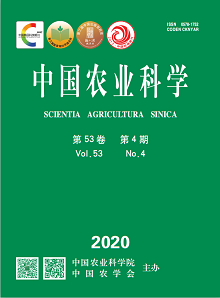【Objective】 This study aimed to identify SSRs in peanut RNA-seq data,clarify their distribution and structural characteristics,and develop gene-associated SSR markers. The study may lay the foundation for the excavation of important functional genes of peanut, the study of isometric variation and molecular markers assisted breeding. 【Method】From 22 different cultivated peanut tissue types and ontogenies that represent its full development, the reported RNA-Seq data, were used to analyze the distribution and characteristics of SSR using MISA software. Gene-associated SSR primers were designed by Primer 3.0 and its quality were detected by e-PCR 2.3.9. 38 pairs of primers were randomly synthesized for polymorphism testing. 【Result】A total of 19 143 SSRs were identified from 52 280 transcripts, distributed in 14 084 transcripts, with a frequency of 26.94%. The dominant SSR repeat unit types were mononucleotide and trinucleotide in mononucleotide to pentanucleotide, accounting for 39.24% and 38.40% of the total SSR locus. Dominant motif types of each repeat unit were A/T, AG/CT, AAG/CTT, AAAG/CTTT, AACAC/GTGTT, accounting for 97.62%, 72.01%, 30.96%, 24.59%, and 16.67% in the corresponding repeat units, respectively. The repetition of repeat units was 5-47 times, and the length distribution range of single SSR site was 10-47bp, mainly concentrated at 10-14 bp. The length range of compound SSR locus was 21-249 bp, mainly concentrated at 31-40 bp. Among all the SSR,13 477 SSR could be used to develop SSR markers, of which 5 020 transcript sequences were annotated to specific genes, containing 5 859 SSR markers locus. These SSRs were unevenly distributed on the 20 chromosomes of A and B genomes, and chromosomes B03 had the most SSR locus of 484. Using electronic PCR, 4 468, 4 929 and 10 188 effective loci were amplified in the genome of A. duranensis, A. ipaensis, A. hypogaea, with 3 968 (67.74%), 4 232 (72.25%) and 5 174 (88.33%) effective markers, respectively. In the genome of A. hypogaea, SSR primers amplified mainly with 2 loci, while 1 477 pairs of SSR primers were single-locus markers. And the physical map of amplified SSR loci was drawn according to the loci position in cultivated peanut genome. Among the randomly synthesized primers, 35 pairs (92.1%) of SSR primers amplified stable and clear bands in two peanut varieties, among which 11 pairs (28.9%) of SSR primers amplified different band. 【Conclusion】 In this study, 13 477 potential primer design SSRs were identified, 5 859 gene-associated SSR markers were developed and detected,with high amplification efficiency in cultivated peanut genome,and the physical map of gene-associated SSR were constructed.









